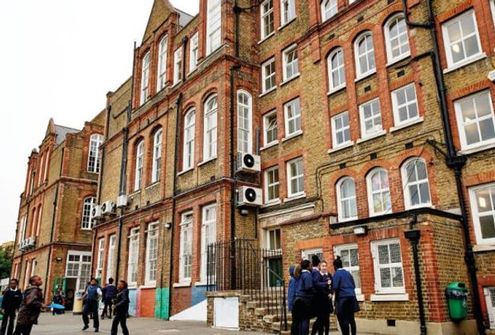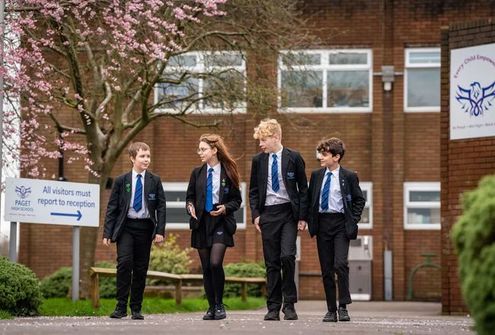How and why did you implement Bedrock?
One of our main reasons for implementing Bedrock was to get all teachers to take ownership of vocabulary and literacy.
I was conscious of literacy not just being the English department, because they already have a jam-packed curriculum. It was important that Bedrock was driven through our tutors (I lead a team of 30-40 teachers).
I’ve worked closely with our designated Bedrock Account Manager, Camilla Carr, to make sure we are on top of tracking so that Bedrock works seamlessly with our automatic system. I pull off the report on a Monday and the data goes into rewards straight away!
Secondary:
At secondary level, we implement Bedrock as compulsory homework twice a week. We have a really strong prep/homework system, so learners get an automatic homework reminder in their daily tutor PowerPoint – and English teachers are aware of what is going on because the data is accessible to everybody.
We wanted Bedrock to run as an independent piece of work, something learners can do on their own, forming a habit.
We have over 600 students that are doing two lessons a week with no problems whatsoever, which is really amazing!
During the first lockdown, we set Bedrock as part of our curriculum for English. Twice a week, Year 7-9 classes completed Bedrock lessons in place of English. We had over 60% engagement, which was significant compared to other tasks we were setting.
Bedrock had the highest engagement for pieces of work that we were able to get a turnaround for. Two-thirds of our cohort were doing Bedrock confidently throughout lockdown 1 - Year 7 and 8 in particular were doing really well.
Primary:
At primary level, students complete Bedrock as part of their lessons. That really helps – and we’ve got lots of siblings as well so a lot of our parents are used to Bedrock [as students at Swindon Academy have used Bedrock at the primary phase, they are well-versed and in a routine by the time they reach the secondary phase at Swindon Academy].
Just the fact that they started earlier meant that it was just much smoother to get Year 7 onboard. They are our best year group at the moment.
We track Years 7 to 10 closely – we’ve eased off a little bit with Year 11 because they are focusing on GCSEs.
We’ve been really firm and consistent for quite a period of time. So we can really pinpoint the students that need us to intervene when they haven’t done it. We are really strict with expectations. It just means that students have grown to really love it.
How has Bedrock helped your lower attaining learners?
To begin with some parents and staff were concerned about access and whether two lessons was too much – but actually some of our most successful students are our lower prior attainers. They have completed whole Blocks and gain a real sense of achievement from Bedrock.
One of the things that drew me to Bedrock is that it almost gamifies literacy – there aren’t many reading programmes that do this. Students can’t cheat the system because they have to work through everything step by step – they can’t just click through. They get points and feedback straight away, so they know how they are doing. They really enjoy it – so we don’t need to create masses of awards.
We link Bedrock to our college system. Every lesson students complete earns them a house point, so they are always awarded automatically. At the end of each term we reveal the leading college. Last term we held a Bedrock pizza party, which went down well!
It sounds like you’ve really embedded Bedrock well at Swindon Academy.
Yes! We are just about to integrate the Bedrock progress and engagement data into our reports. Our two progress review days [Swindon Academy’s equivalent to most schools’ parents’ evenings] are led by tutors. I want students to reflect on their reading in a section for Bedrock. We’ll also launch parent user signup at this time. We need to really open up that conversation.
Have you seen the impact of students’ learning on Bedrock in their written work?
We’ve all just done a thorough mark through of our students’ extended writing. Anecdotally, vocabulary is improving. Our Year 8s are noticeably better, particularly in their analytical writing skills. I remember what they were like a few years ago. We are picking up on a lot of literacy issues because of lockdown – we have a lot of disadvantaged students.
I do think that generally they are using higher levels of academic vocabulary – they seem to be more comfortable with it than before. If I look at where we were this time last year – a Macbeth assessment, for example – they definitely ‘sound’ better than they did before. The vocabulary has definitely improved in them, absolutely.
I am looking forward to the next stages of Bedrock, when we can start to build our own Tier 3 vocabulary curriculum! Bedrock’s approach always considers memory retention with retrieval, pictorial representation, audio and visual support… We have loads of good practice, but getting that consistency across departments is our next goal.












